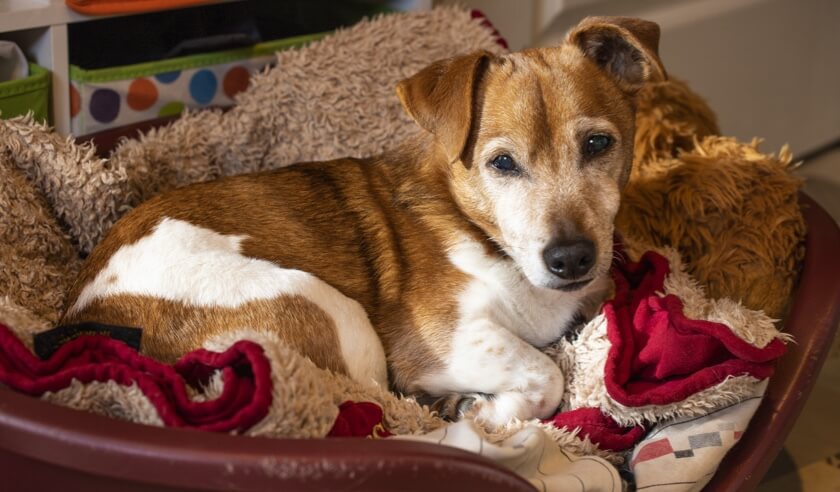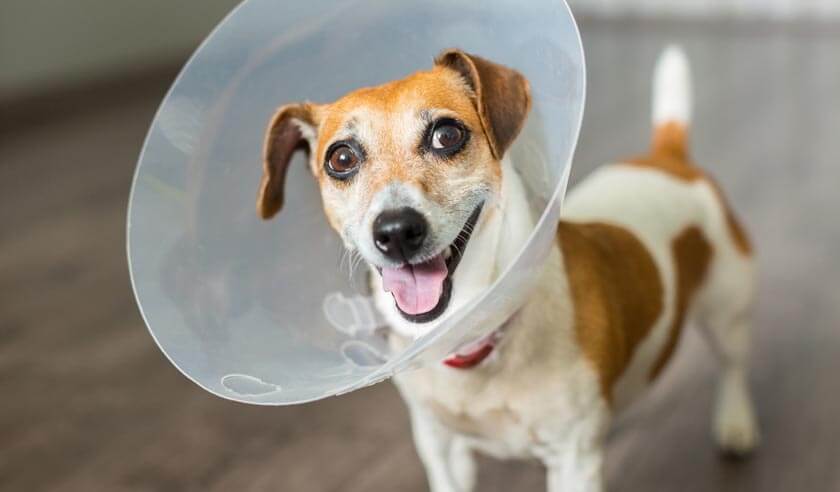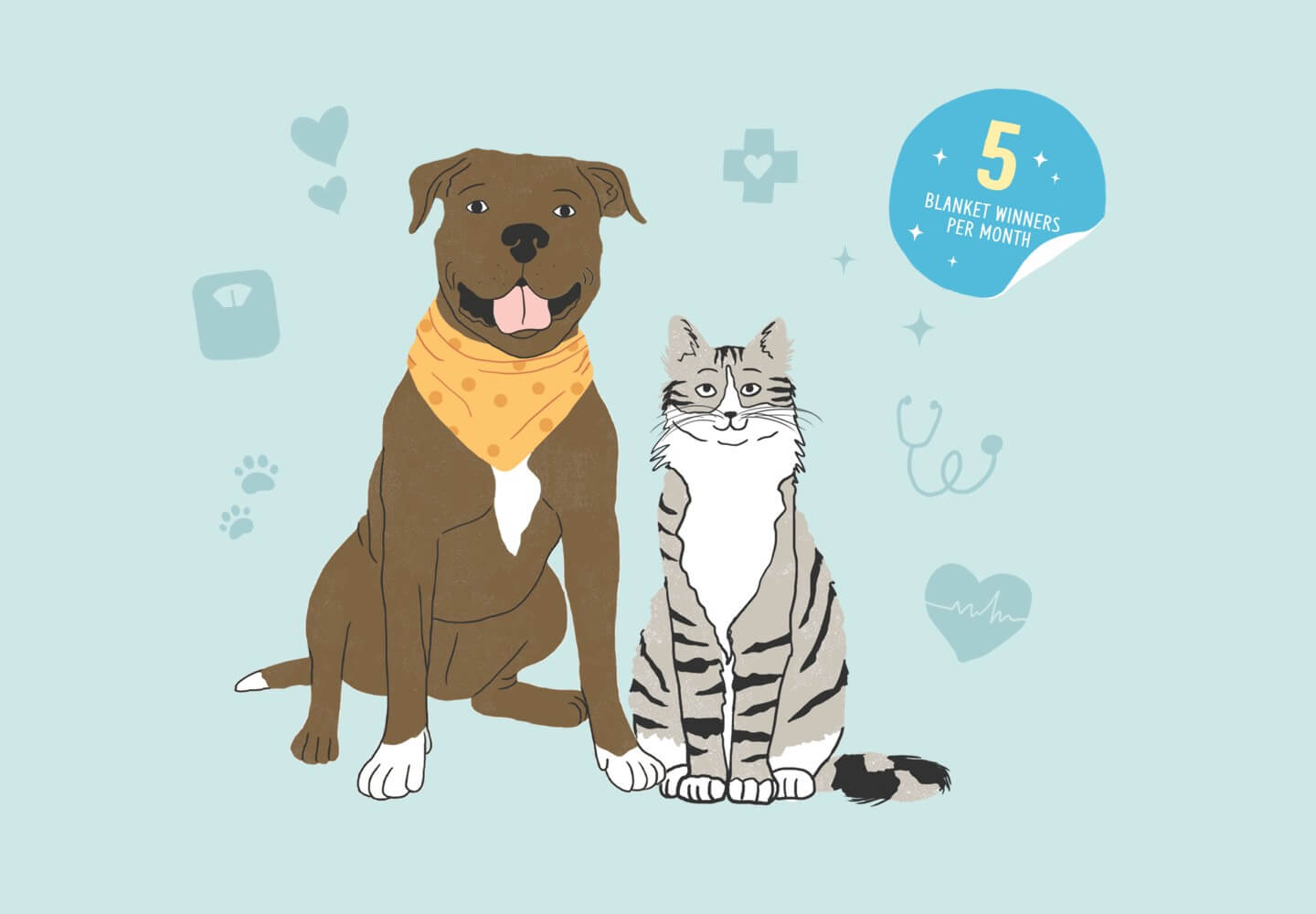You noticed your dog limping on one of their back legs and visited your veterinarian. Following an exam and a work-up on your dog, the veterinarian informed you that your dog tore or damaged their cranial cruciate ligament., The veterinarian may recommend a surgery called a TPLO in order to repair it. You likely feel overwhelmed with the news, unsure of what TPLO even means, and what the surgery may entail. Don't worry — knowing is half the battle. Here are the answers to common questions to put your mind at ease. Your veterinarian will also be an excellent partner to explain the procedure, outcome and follow-up.
What Does TPLO Stand For?
The acronym TPLO stands for Tibial Plateau Leveling Osteotomy.
What Is the Cranial Cruciate Ligament?
Your dog's stifle joint (aka knee) is the middle joint of the hind leg and within that joint is the cranial cruciate ligament. This ligament is critical to the stabilization of the knee. The most common cause of lameness and pain in the back leg is a ruptured (torn) cranial cruciate ligament. When this ligament ruptures, it can damage the meniscus, a fibrocartilaginous structure that helps stabilize and provide shock-absorbing protection for the knee. Trauma to the ligament can lead to subsequent osteoarthritis in the knee joint.
Though it’s generally a combination of factors, the most common causes of cranial cruciate rupture include:
- Degeneration or aging of the ligament
- Obesity
- Poor physical condition
- Body conformation issues
- Physical trauma
Breed can also be a factor. Some predisposed breeds include American Staffordshire Terrier, Labrador Retriever, American Cocker Spaniel, Rottweiler, Chow Chow, German Shorthaired Pointer, Saint Bernard, Bullmastiff1, Newfoundland, Bichon Frise, German Shepherd2, Akita, and Chesapeake Bay Retriever3.
In 40-60% of dogs with a torn cranial cruciate ligament in one knee, the other knee will rupture at some point in the future3. The ligament can partially or completely rupture, however, over time, partial tears will develop into full tears.
How Does TPLO Surgery Repair a Dog’s Cranial Cruciate Ligament Rupture?
The sliding motion of the knee joint is thought to be part of the underlying cause of the cranial cruciate rupture. TPLO surgery for dogs aims to adjust the area at the top of the shinbone, called the tibial plateau, to minimize that sliding motion.
Normally, the tibial plateau slopes downward toward the dog's tail. TPLO surgery makes this slope almost flat, eliminating the sliding motion downward and backward. This change slightly repositions the caudal cruciate ligament. The caudal cruciate ligament is another band of the cruciate ligament that prevents the femur (thighbone) from slipping back or sideways. All of this helps the joint's stability.
Studies indicate that TPLO surgery is good at restoring the joint's normal biomechanics for both small and large dogs4. This means the relationship between muscles, the skeleton, and the joint is restored. Many dogs can continue athletic activities, and there is less progression of arthritis following this type of repair for cranial cruciate ruptures.
What Does TPLO Surgery Entail for Dogs?
Once your dog is under general anesthesia, the veterinarian may do nerve blocks to numb the leg for about 20 hours. This increases your dog's comfort by helping manage pain during and following the procedure.
Before the actual procedure, while the nerve blocks are taking effect, radiographs of the knee joint are taken. Special measurements are needed to determine the tibial plateau angle and help with necessary preoperative planning.
Once the surgical site is properly prepped, the fur is clipped from the hip down to the ankle, and the skin is scrubbed. Your dog will then be moved to the operating room, where the skin will be prepped one last time.
The surgeon will make a skin incision to expose the knee joint and assess the meniscus for damage. If damage is present, the damaged portion is removed.
Then, using an orthopedic saw, the top of the tibia is cut and rotated to achieve as level a surface as possible. Once the bone is in the proper position, it is stabilized with a locking bone plate and screws. The bone plate and screws are not needed once the bone heals (in about two to three months), but they are generally left in place unless they're causing irritation or infection. The skin is then either stapled or sutured back together. In some cases, a light bandage is placed over the incision site.
What Will Your Dog’s TPLO Surgery Recovery Look Like?
The initial recovery period following this procedure averages about eight weeks, but full recovery from TPLO surgery may take up to six months.
Before bringing your dog home from surgery, prepare their recovery space. It should:
- Be quiet and comfortable with minimal activity in the location
- Be close to a door for easy outside access during supervised potty breaks
- Have food and water bowls nearby
- Have non-slip rugs to help prevent your dog from falling
- A space to keep your dog where they can’t jump on or off things
Your veterinarian will provide discharge instructions that you must follow. Be sure to ask questions, so you know the exact schedule for medications, surgical site care, feeding, and activity.
Several times per day, evaluate the incision site for any redness, swelling, odor, or discharge. It’s critical that you prevent your dog from licking, rubbing, or chewing their incision site during the first two weeks. Keep other pets from licking the site as well. If anything seems abnormal, contact your veterinarian immediately.
It’s normal for your dog to experience some mild discomfort from the inflammation caused by the surgery. Manage this with appropriate pain medication. Remember, dogs are masters at hiding pain. Even if you think your dog is not painful, it's important to give the medications prescribed by your veterinarian.
Some dogs feel well enough to bear weight on the leg a few days after the procedure. While this is good for maintaining muscle strength and helping the bone to heal, activity restriction is critical.
During those first few weeks following the procedure, leash-walk your dog several times daily for about five minutes at a time. Avoid running, jumping, or playing, especially with other pets. It's also good to avoid stairs, if possible. You may need to help your dog rise or walk by supporting them with a sling. As your dog continues to recover, you can gradually increase the duration of their walks per your veterinarian's instructions. Once you reach about the 8-week mark, most dogs can handle one or two 20 to 30-minute leash walks per day. Do not allow your dog off leash until their veterinarian clears them for unrestricted activity.
Your veterinarian may recommend rehab and physical therapy after the procedure. Rehab and/or physical therapy will help with the recovery and enhance outcomes in the long run.
It’s very important to schedule follow-up visits with the veterinarian so they can assess your dog’s progress.
About 8 weeks after surgery, radiographs are taken to evaluate the bone's healing process and ensure everything is progressing normally.
ZPC-02537
- Predisposition of Dog Breeds to Rupture of the Cranial Cruciate Ligament. ResearchGate. https://www.researchgate.net/publication/242395629_Predisposition_of_Dog_Breeds_to_Rupture_of_the_Cranial_Cruciate_Ligament. Accessed November 3, 2023.
- What Dog Breeds are Prone to ACL Injuries? TPLO Info. https://tploinfo.com/blog/what-dog-breeds-are-prone-to-acl-injuries/. Accessed November 3, 2023.
- Cranial Cruciate Ligament Disease. American College of Veterinary Surgeons. https://www.acvs.org/small-animal/cranial-cruciate-ligament-disease. Accessed November 1, 2022.
- Influence of tibial plateau leveling osteotomy and tibial tuberosity advancement on passive laxity of the cranial cruciate deficient stifle in dogs. Ciprian A. Ober, et al. https://pubmed.ncbi.nlm.nih.gov/30773653/. Accessed November 1, 2022.





